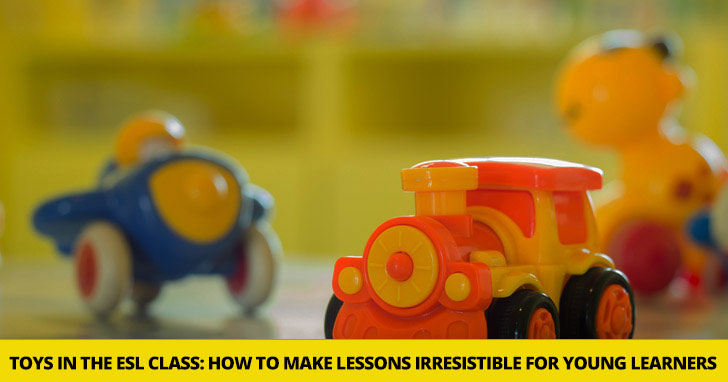Toys in the ESL Class: How to Make Your Lessons Irresistible for Young Learners


Language is a tool, something we use to make connections with other people around us. And a big part of that connection comes through talking with someone, both one on one and in groups. But sometimes it’s hard to get ESL students talking, and that is never truer than when you are working with young students. While some kids can talk your ear off, others are afraid to make a peep in class whether it’s being conducted in their first language or a second language. Kids are shy. They are very aware of what their peers think of them. And they may have trouble speaking up when it comes to English. The following activities are great for coaxing young learners out of their shells and getting them to talk even when they might otherwise let their shyness dominate them.
Sometimes when therapy sessions are portrayed in the movies, you see patients talking through a puppet rather than sharing their deepest feelings as themselves. Perhaps that is because it’s easier to speak when you feel it’s not really you doing the talking. This works for anyone who is struggling with deep emotions as well as for young children who might be afraid to speak up on their own. An easy way to encourage your young students to speak is to have a collection of stuffed animals and plush puppets on hand for them to play with and talk through. Rather than asking your students to role play, have them be the voice behind a stuffed animal who is ordering food in a restaurant, introducing themselves to a new friend, or trying to solve a problem with another stuffed animal. This way your students won’t let their shyness or timidity get between them and speaking since it’s not exactly them doing the talking. They also won’t have to worry about peer acceptance since the opinions they share will be those of the stuffed animal and not themselves, which takes away the fear of judgement.
This goes along the same lines as talking through stuffed animals. By letting students put on costumes and talk as the character they are pretending to be, kids may be more willing to speak up and participate in class. Your costumes don’t have to be elaborate to be effective. Even something as simple as a mask or half mask made from a paper plate can be enough to get kids out of their fear of speaking. So when you want to retell a story or do a role play, have students get the garb out and dress up so they can speak in character. It’s less intimidating as speaking as yourself.
Kids are full of imagination! Some even go so far as to create completely fictional companions to play with and befriend. When you can include your students’ imaginations in their speaking activities, they will be all the more eager to speak up. You can try something as simple as having them tell a story. Whether that story is told by one student or you make the story a class activity, kids will love coming up with new adventures and experiences for fictional characters. You might want to ask your students to draw an alien, animal, or other being and then have your students share a story about that creature as they share the picture with the class.
Show and tell is one of kids’ most favorite activities to do in a class setting. Most kids love sharing something important to them with their friends and telling those friends about it. You can encourage this kind of sharing from your students when you make show and tell a regular part of class. Get kids in the habit of standing up and talking about something special they brought to class. You may want to let students share form their seat since standing up front might be overly intimidating for some young students.
This goes for any ESL students, but it’s especially true when you’re talking about young learners. Make sure when you ask questions that you avoid yes/no questions that can be answered with one simple word. Instead, ask information questions, those that start with the words who, what, where, when, why, and how. These questions encourage students to say more than just one word. And then follow up your first question with clarification questions to keep students speaking. Questions such as the following: And then what happened? What did you think about that? What else can you tell me? So what will you do now? Sometimes students just need a push in the right direction and a little encouragement to keep going that way.
Imagine how you would feel if you were standing in front of a giant and his voice trickled down to you from a dizzying height up above. How much would you have to say? To encourage your young students to talk to you, get down on their level. Squat down so you are eye to eye. That will make the conversation less intimidating for your students and will take away some of the fear of talking to an adult.
Encourage your students to share more and say more in class with these simple techniques. After all, sometimes the most effective strategies are the simplest ones.